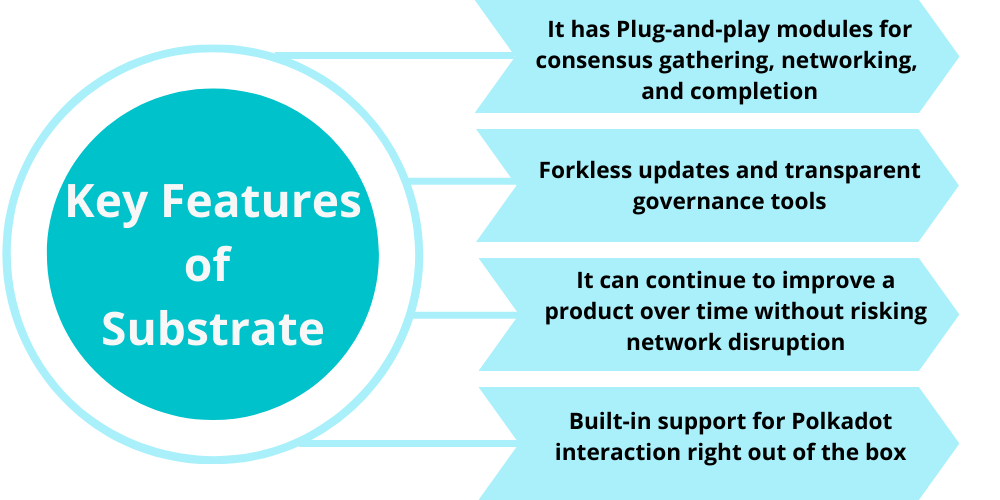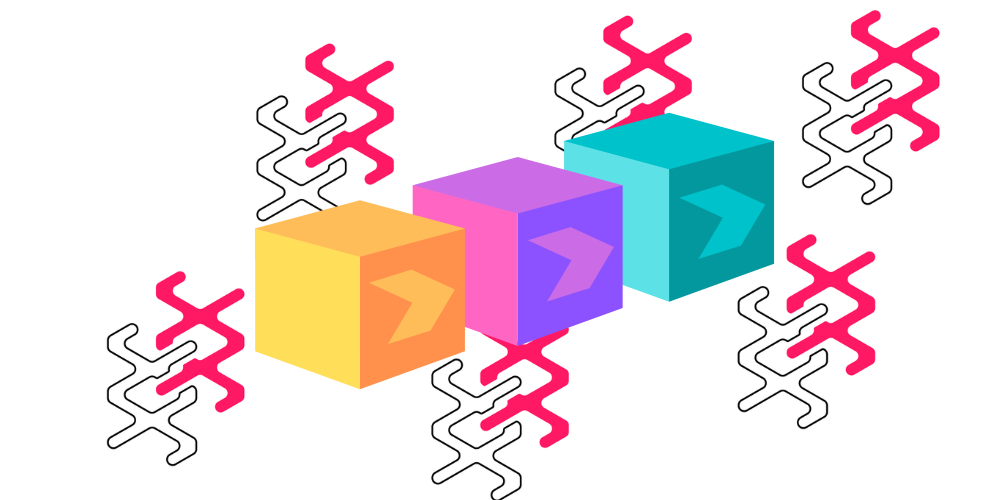Polkadot (DOT) is a next generation blockchain that aims for interoperability and is based on the concepts introduced by Ethereum. It is a blockchain protocol that tries to join networks in a compatible environment.
One can divide the protocol into the main chain (the relay chain) and para chains. The Polkadot main chain is like other blockchain networks and provides transaction security and consensus. However, parachains are user-created chains that harness the power of the mainchain and pass information back to the mainchain to ensure that Polkadot has a consistent transaction history.
Polkadot aims to offer all kinds of use cases without sacrificing scalability by providing security across the main chain and enabling developer-driven parallel chains. Not only this, but such versatility will allow developers to build bridges or connections between blockchain networks, enabling interoperability.
On the other hand, Polkadot is a blockchain that describes a "layer 0 protocol". The Polkadot protocol provides an environment in which other blockchains, known as "parachains," can run. Essentially, it provides the infrastructure that other blockchains can use to interact with each other securely.
Polkadot also offers its virtual environment through Substrate.
The Polkadot community aims to provide a framework for building a unique blockchain and its ability to connect different blockchains.
Substrate: Next evolution of the blockchains
The Substrate is an open-source development platform that provides developers with a framework to build their parachains. The main Polkadot chain links the Substrate-powered chains while interoperable with other blockchain networks. The Substrate offering provides an Ethereum-like Virtual Isolated Environment (WASM) for DApp development and testing.
Substrate is the name used for the Polkadot blockchain building framework. It provides developers with various tools to design their custom blockchain for various applications. The blockchains can then be launched independently or integrated with the Polkadot shard network, or "Parachains."
Polkadot's underlying technology is Substrate, a development framework that makes it easy for users to create a unique blockchain for a particular use case.
Substrate is modular, customisable, and allows users to employ pre-built components to build core business logic while leaving the framework customisable. Therefore, it is generic and minimises assumptions about building a blockchain.

Substrate framework
Substrate is a software framework to create custom blockchains and was developed by Parity Technologies. Polkadot uses a substrate framework as part of its underlying technology. Substrate allows developers to create purpose-built blockchains without spending much time or requiring blockchain experts to do so.
Substrate is also a set of tools that allows access to a library of custom templates to increase the ease of blockchain development. Its "Wasm" (WebAssembly) protocol allows development teams to create smart contract platforms.
Substrate is a framework for building blockchains with a modular approach, allowing users to create purpose-built decentralized ledgers using custom or pre-built components.
Building Substrates
According to its documentation, one can build Substrate in three ways:
1. With Substrate node: Users can run a simple minimal configured node in a few steps, also known as creating a substrate chain.
2. With Substrate FRAME: Users can freely customize the runtime using the Framework for Runtime Aggregation of Modularized Entities (FRAME). That is, create a substrate-based chain by choosing the logic of the blockchain using pre-made modules or by creating them.
3. With Substrate Core: Users can design and deploy their chain from scratch using any WebAssembly supported coding language.
Being a complete blockchain building platform, Substrate provides all the building blocks of a blockchain, such as a database layer, network layer, consensus engine, transaction queue, and runtime module library.
Each of these main components can be customized and extended. The vision behind this modular customization is to simplify the creation of the blockchain, so developers do not need to understand and be experts in all aspects of the chain, just those where they want the chain to be unique. You may notice that most existing projects have modified the protocol layer of the chain, where the project-specific rules are established.
It is worth mentioning that Substrate was born as a repository created for Polkadot. According to Gavin Good, founder of Polkadot and CTO of Ethereum, it resulted from what he thought Ethereum 2.0 would be in 2018. He ended up with a completely new multi-chain platform that works as a blockchain to process transactions (Polkadot) and as an existing framework to create new blockchains.
Substrate: the development tool
Polkadot's powerful development tool is Substrate, making building a new blockchain significantly easier. Developers can build their unique blockchain, a secure, fast, and efficient blockchain, connecting to the relay chain. This design will allow developers to focus on adding value to their projects instead of spending resources and funds to build an infrastructure from scratch.
All Substrate chains are Polkadot compatible, with seamless access to the interoperable ecosystem of parachains, apps, and resources.
The blockchain industry pioneers who created Substrate envisioned a system that could overcome the limitations of previous generation networks and intended to offer developers a construction tool that avoided building and optimising a blockchain. from its foundations.
Although synergistic, Polkadot and Substrate do not depend on each other. You wouldn't need a Substrate to build and maintain Polkadot parachains, while blockchains made with Substrate do not need to connect with Polkadot or Kusama.
Substrate 2.0
"Off-chain worker" is the most important feature of Substrate 2.0 is the development module that allows blockchains to perform advanced calculations, or they can make their own requests from the web to the physical world.
These Off-chain workers leverage Substrate nodes to perform operations that would normally be outside of the blockchain's capabilities. Substrate 2.0 allows developers to offload these operations to network nodes, which can perform web requests, encryption and decryption, data signing, random number generation, and other CPU-intensive tasks.
This system would allow Polkadot developers to create complex systems, such as price feed providers, completely on-chain, removing some of the trust elements involved. The problem of finding reliable data sources, the core of the "oracle problem", would remain, but developers would have maximum flexibility in designing their DApps and blockchains.
By contrast, Oracle systems like Chainlink have completely off-chain data collection logic. The smart contract developers can see only the final data sent by the oracles. This method requires a certain degree of trust in these providers that these solutions try to minimize.
Substrate 2.0 also introduces several easy-to-use developer tools in palettes and configurable modules that simplify specific actions. For example, the "Democracy" palette provides an easy introduction to chain voting. Instead, the "EVM" platform replicates the Ethereum virtual machine to allow developers to transfer their smart contracts to Polkadot.
The development of Substrate is a significant technological advance, but it remains unknown as to whether or not developers and users will flock towards Polkadot. The Web3 Foundation, which supports Polkadot, has been busy funding teams to build blockchain infrastructure, from bridges to Ethereum and other blockchains to in-house decentralized finance projects.
A key part of Polkadot's value proposition is sharding, which would allow the Substrate blockchains to communicate with each other. However, communication between shards is still in the testing stage.
In Polkadot co-founder Robert Habermeier's words, Substrate is "a set of libraries for doing all the really annoying things about writing blockchains.". Substrate separates the functionalities of a blockchain as modules. It generalizes them enough to be used effectively in different scenarios, while their manageability allows for near-instant implementation. Substrate helps to create blockchains that can connect to Polkadot.
Polkadot is not Substrate is not Polkadot
Although Substrate makes it extremely easy to build Polkadot-ready blockchains, it is unnecessary to build blockchains on the Polkadot network with Substrate. You'll still find Substrate a useful framework for creating a next generation blockchain even if you don't want your blockchain to connect to Polkadot.
In the future, there could be redundant frameworks for Substrate, also optimised to integrate with Polkadot, giving developers an alternative, or you could still build your para chain from scratch.



